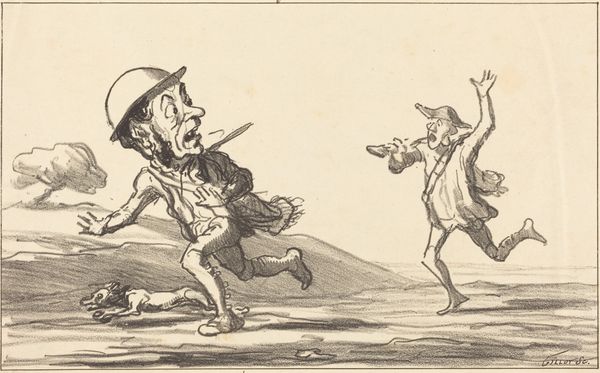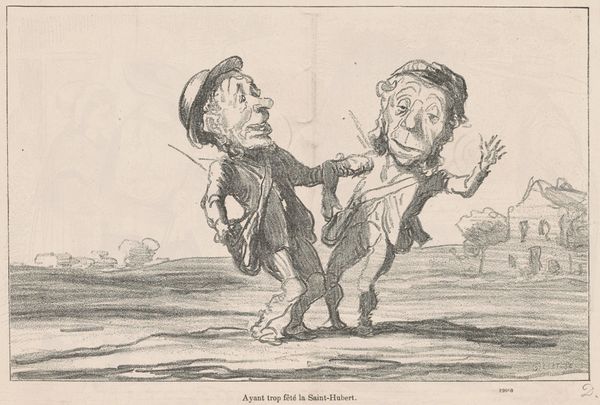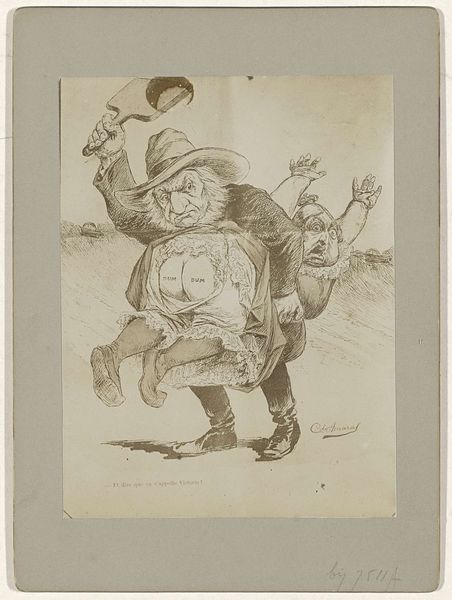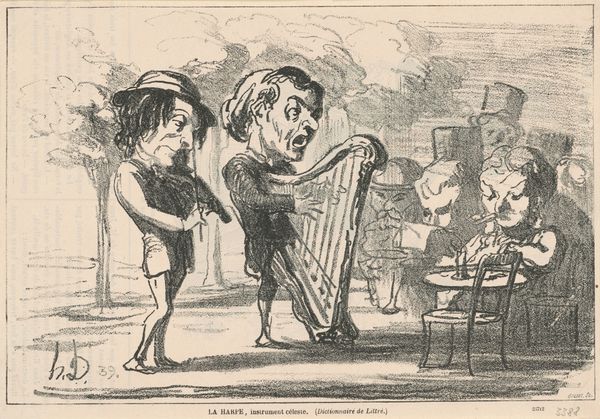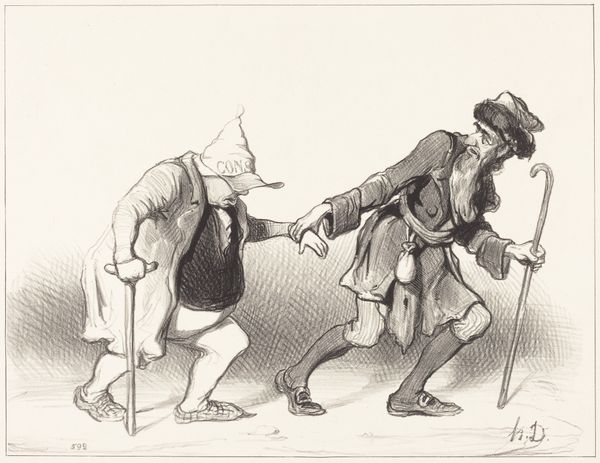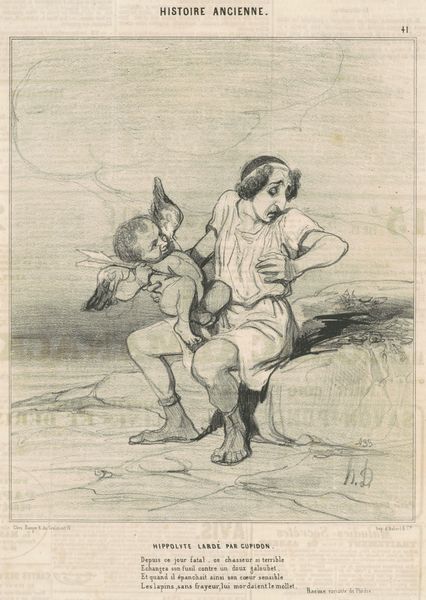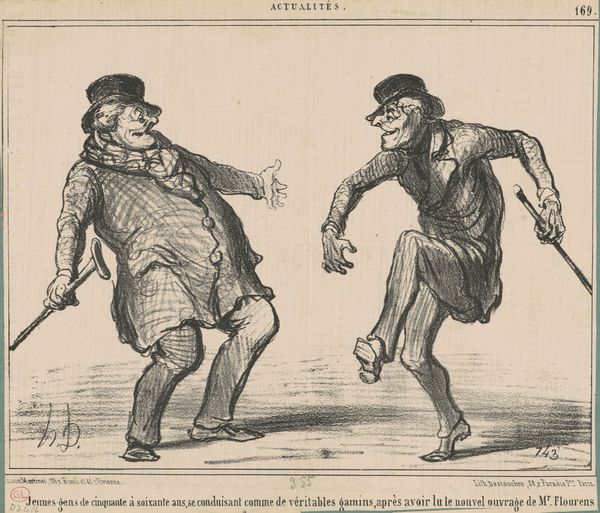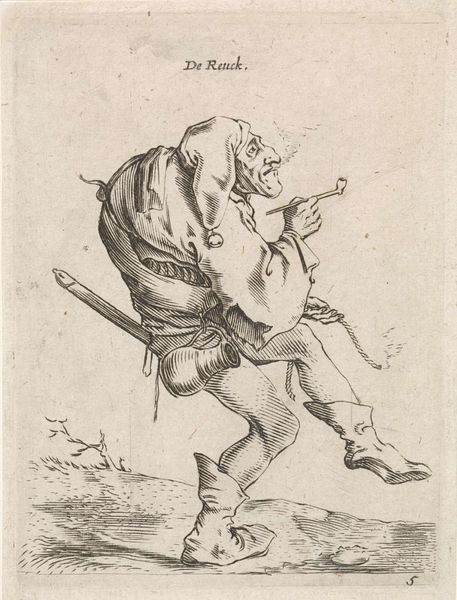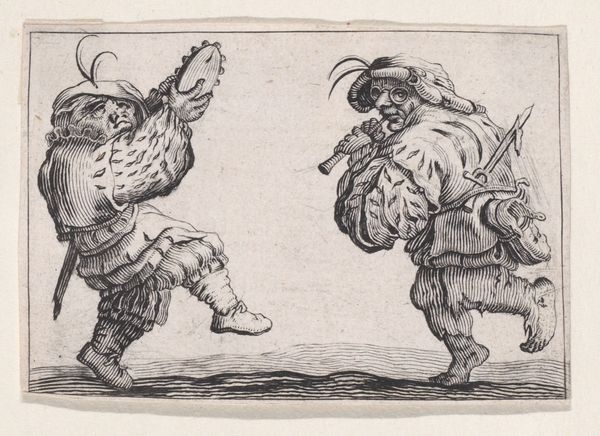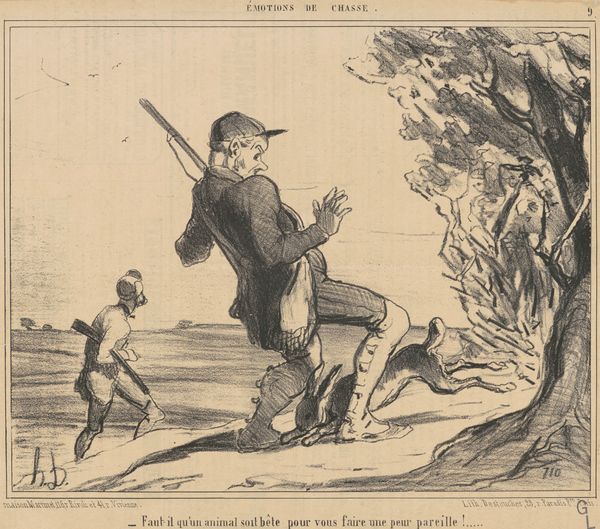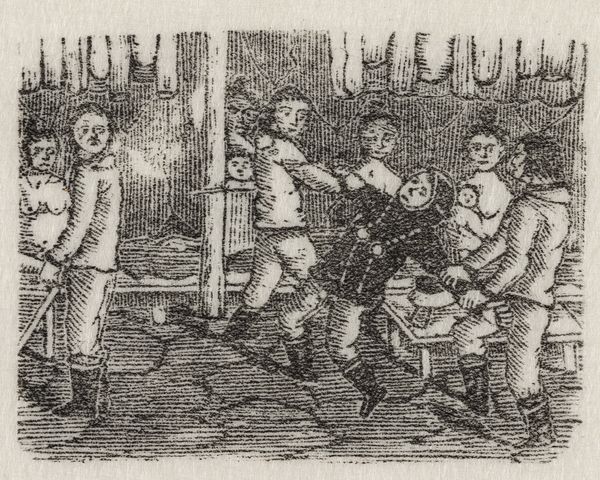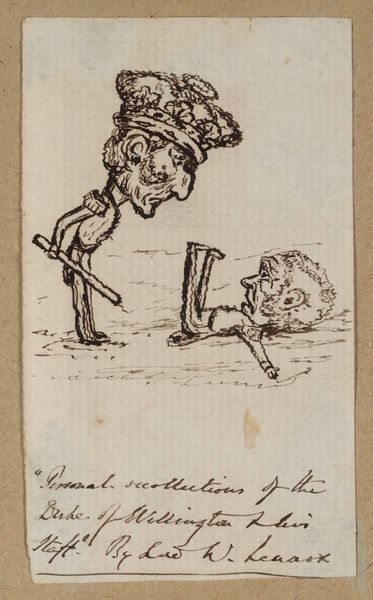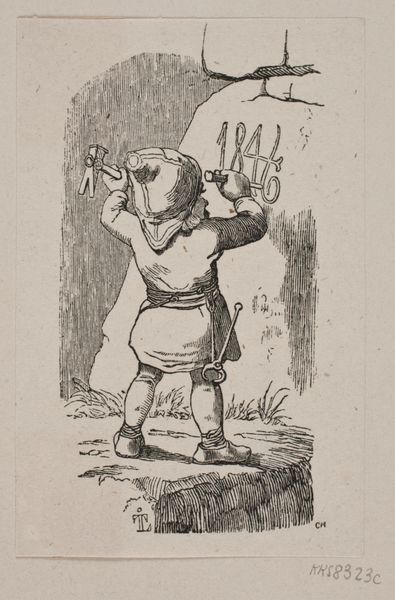
Copyright: National Gallery of Art: CC0 1.0
Curator: Un Criminel!, created in 1864 by Honoré Daumier. The lithograph rendering reminds me of the political turmoil, struggle, and revolution occurring throughout France. Editor: The title seems to clash with the somewhat comedic, cartoonish figures. It almost looks like a scene from slapstick vaudeville. What's your reading of this piece? Curator: Well, it is indeed ironic. But that contrast itself speaks volumes. Consider the role of caricature in 19th-century France. Daumier expertly used satire as a potent tool for social critique. These figures, though seemingly absurd, likely represent recognizable types within the political or social landscape. Editor: So, it’s not *just* funny? I guess the 'criminal' isn't necessarily who we think it is. Curator: Exactly! Daumier was often critical of those in power, so perhaps the true crime here is the injustice perpetrated by the elite upon the common people. What do you make of their expressions and gestures? Editor: One figure appears fearful, holding grapes protectively; the other one almost accusatory. Maybe the grapes symbolize something being taken, some kind of unfair exchange? Curator: Precisely! Consider the legacy of revolutions and uprisings in France. These visual elements add layers of meaning. By understanding Daumier's engagement with social justice, this caricature moves beyond simple humor and becomes a powerful indictment of societal failings. Editor: So it is funny, but it is more so a subversive, smart, and important artwork from that period. It encourages the viewers to be thoughtful about social inequity then, and, thinking more broadly, maybe even today. Curator: Precisely. Daumier challenges us to see beyond the surface and to question the power dynamics that shape our world.
Comments
No comments
Be the first to comment and join the conversation on the ultimate creative platform.
